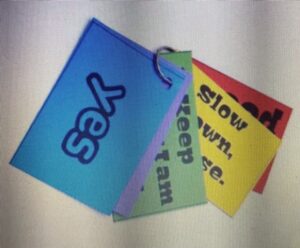Whole-group response strategies allow learners to respond to questions simultaneously, increasing both their active participation and engagement. These strategies also provide educators with ongoing feedback on learner performance, which further guides teaching practice.
Tincani & Twyman (2016) state that student engagement is thought to be a product of many variables, including community factors such as socioeconomic status, early learning experiences as well as interest in subject matter, the school’s climate, and the quality of teaching and teacher interaction (p.7).
Classroom strategies that promote student engagement through active student response, provide direct means to improve teaching quality enhance student outcomes.

Photo by Taylor Wilcox on Unsplash
Heward (1994) defines active student response as occurring “when a student emits a detectable response to ongoing instruction” (p. 286). In other words, active student response occurs when learners raise their hands, respond orally with an answer, record an answer, or engage in an observable response, following a question or an instructional cue posed by their teacher.
Photo by NeONBRAND on Unsplash
Heward (1994) details three low-tech strategies to increase active student response:
- Choral responding
- Response cards
- Guided notes
Research indicates that when educators provide consistent and regular opportunities for learners to respond during classroom instruction, the likelihood that learners will be engaged increases (Hattie, 2012).

Increased engagement may include:
- Learners demonstrating increased on-task behavior
- Increased response to questions or discussions
- Increased correct responses (Simonsen et al., 2008)
Collectively, the research findings underscore four important principles for enhancing student engagement.
Teachers can increase active student response in their classrooms. Research shows that these types of strategies increase students’ classroom participation, on-task behavior, and correct responding in comparison to more traditional instructional methods. As Tincani & Twyman (2016) claim “these strategies employ readily accessible instructional materials, can be used with existing lessons and curricula, and produce substantial improvements in performance of students who are less responsive to more traditional instructional methods” (p. 9).
Whole-group response strategies or active student response strategies increase access and promote equitable learning for learners with exceptionalities or disabilities. The Individuals with Disabilities Education Act (IDEA) (2004) emphasizes the role of inclusion and access, as integral to education for students with disabilities.

Photo by Arthur Lambillotte on Unsplash
Haydon et al., (2013) explains that strategies such as whole-group response benefit students with learning disabilities, behavioral disorders, intellectual disabilities and autism.
Tincani & Twyman (2016) explore a variety of techniques of response strategies to promote engagement and increase learner participation. They claim that each strategy is beneficial in increasing the level of active response, increasing a learner’s rate of correct response, increasing a learner’s response accuracy and in some cases has been shown to decrease challenging behavior (p. 10).
Response cards
- Enable learners to simultaneously answer posed questions by recording their answer
- Examples: dry-erase boards/ markers, write on response cards, pre-printed response cards
- Allows the educator to see the learner response simultaneously, so that the teacher can provide feedback and gauge learning
- Requires less time than calling on each student to answer individually, while also providing discretion for learners who find class wide interactions challenging

Choral responding
- Supports quick paced instruction to improve learner response to instruction
- Occurs when students respond in unison to posed questions that require brief responses
- Effective in increasing a learner’s active response and decreasing challenging and unfavorable behavior
Guided notes
- Require and encourages careful listening
- Increases quality of notes taken, thus enhancing academic performance
- Are teacher prepared handouts that guide learners through a lecture or discussion
- Provides cues and prepared spaces for key concepts and facts
- Can be used in a wide range of subject areas
